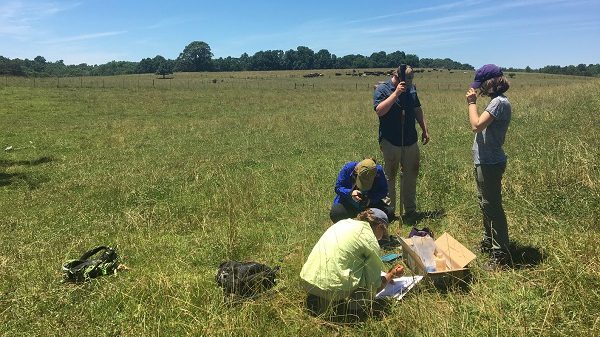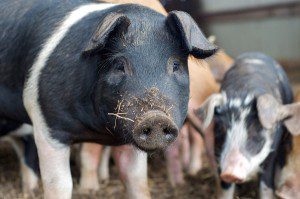Professors awarded USDA grant to study local agroforestry, animal production

Three Furman University professors will study how agroforestry systems improve agricultural sustainability at area farms with a $135,000 grant received from the Sustainable Agriculture Research and Education (SARE) organization, part of the United States Department of Agriculture.
Principal investigator on the project is Furman biology professor Dr. John Quinn. Co-investigators are Department of Earth and Environmental Sciences and Sustainability Science professors Dr. Brannon Andersen and Dr. Courtney Quinn.
Agroforestry systems, more specifically silvopasture systems, integrate working trees with animal production, providing multiple environmental and economic benefits to a farm and the broader ecosystem.
By analyzing area farms with mature tree stands and understory growth, researchers intend to provide data that increase economic stability of farmers while enhancing environmental quality within farmland and the larger landscape. They will do this by restoring forest patches which have been invaded by exotic plants, and by working closely with local farmers in developing sustainable grazing practices.

Greenbrier Farms
The farms where research will be applied include:
BioWay Farm, Ware Shoals, S.C.
Greenbrier Farms, Easley, S.C.
Spirit Creek Farms, Rutherfordton, N.C.
Spirit Level Farm, Augusta, Ga.
Says Roddy Pick of Greenbrier Farms, “Furman is working directly with area producers on many issues related to sustainable farming systems—the scope of the effort is unique in the region. Furman and Greenbrier have been involved in research for some time now, and this project further demonstrates how universities and local farms can collaborate. The agroforestry part of the project is carried out with pigs, and we sell our sustainably raised pork to Furman’s dining hall … it’s a relationship that works for everyone,” adds Pick.
Researchers will identify suitable animal forage mixtures, acquire baseline data on soil fertility to track responses to agroforestry methods, and test if the restoration efforts improve wildlife habitat in upland forests in agroecosystems.
Ultimately, the team will be able to answer questions like: What crop mixes best grow under the shaded conditions of restored upland agroforestry systems? What is the response of wildlife to forest restoration and ground cover planting? How can understory forage crops be used to restore ecological function and services (i.e. soil fertility and health)?
The SARE funds will also be used to communicate the findings through field days, publications, and an online video recapping lessons learned and management recommendations.
Read more about the project at this SARE link. Or contact the Furman News and Media Relations office at (864) 294-3107.